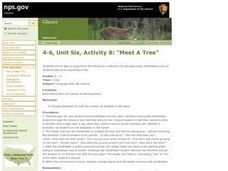Curated OER
Origami Ducks: Geometry, Listening, and Following Directions
Make origami ducks with your class to reinforce geometry concepts and vocabulary; develop fine motor and visual translation skills; and enrich study of Japanese culture, the pond habitat, or migration. Create a whole group "worksheet"...
Curated OER
Art: Drawing Ducks in Their Natural Habitats
Sixth graders explore various waterfowl species and discover how duck stamps are used. After researching specific types of birds for a stamp competition, they draw the birds in various natural settings. Before sending the submissions,...
Curated OER
Duck, Duck, Goose or Swan?
Students study the waterfowl of a wetland. They use Venn diagram to compare and contrast the duck, goose and swan. They research the waterfowl using the Internet. They create a timeline and slideshow of the life of a duck, goose, or swan...
Curated OER
What a Character! Comparing Literary Adaptations
What do Robert Downey Jr., Basil Rathbone, Jeremy Brett, Fritz Weaver, Roger Moore, Benedict Cumberbatch, and Daffy Duck have in common? Why, it’s elementary, my dear Watson! They all have portrayed Sherlock Holmes. Literary detectives...
Curated OER
Mo Willems Author Study
Who is Mo Willems? Explore the author with your class. Learners read books written by Willems, compare and contrast the characters therein, and make predictions about what will happen. Finish off this author study by having small groups...
Curated OER
What Do You See at the Pond?
With What Do You See at the Pond?, young readers explore pond life and practice reading strategies. Learners first make predictions and then read the simple story independently. After a second read-through with a partner, kids come...
Curated OER
Dawdle Duckling
Students read the book Dawdle Duckling and complete different activities about the book. Students research the wetlands, research ducks, complete an oil and water experiment, map a cove, and more.
Curated OER
Why Not Fabric?
Students investigate art from Native American culture by creating fabric. In this native art analysis lesson, students identify the art of Plains Indians and discuss how it is represented in their fabrics, beads and decorations. Students...
Curated OER
Explore: 2nd Grade Camouflage
Second graders discuss camouflaging in animals. They create camouflaged animal artwork out of various craft and art supplies and then see how well the creation blends into an outdoor area.
Curated OER
Animal Movements
Students become familiar with the movement of various animals. In this animal movement lesson, students relate their knowledge of animal movements to the music they are moving to.
Curated OER
Let Me Tell You About My Favorite Animal
Students create books about their favorite animals using graphic organizers.
Curated OER
Onomatopoeia Poems
Students write onomatopoeia poems. In this creative writing lesson, students listen to a picture book that introduces the concept of onomatopoeia. Students create their own list of words and write a short poem using onomatopoeia.
Curated OER
Voting Process
Students study and participate in the voting process. In this voting process lesson plan, students read Duck for President and vote on class snacks. Students create posters for the class snacks and present them to the class. Students...
Curated OER
Brown Bear, Brown Bear, What Do You See?
Learners read the story Brown Bear, Brown Bear, What Do You See? and read companion poems, make a bear book, blend sounds, and more. For this guided reading lesson plan, students take 5 days to read the book.
Curated OER
Fast, Fun & Easy Fabric Vases
Learners construct a fabric vase as shown in the book, "Fast, Fun & Easy Fabric Vases" by Linda Johansen. They cut fabric and appliques using plastic templates then iron on fusible interface. Pieces of the vase are then sewn...
Curated OER
What Happens Next?
Fifth graders complete activities to help them sequence events in a story. In this sequencing lesson, 5th graders read a story and work in groups to retell the story by creating a flowchart of events to reconstruct. Students create their...
Curated OER
John Constable: artist
Students paint their own cloudy sky after studying paintings of the artist John Constable. In this John Constable lesson plan, students read and discuss the outdoor paintings of this artist and then complete their own painting of the...
Curated OER
The Tale of Peter Rabbit
Students read The Tale of Peter Rabbit and make predictions through a picture walk before they read. In this reading lesson plan, students also color the pages of the booklet and put it in the correct order.
Curated OER
"For the Birds" [part I]
Students identify birds that appear in Chinese and Japanese art, learning about
their physical characteristics, classifying them according to scientific principles, and exploring their habitats and migration patterns. This is part one...
Curated OER
Read To Feed
Students read to accumulate pledge money to purchase a heifer for a needy family. In this reading for the needy lesson, students solicit pledges from family and friends for each book they read. They use the money from the pledges to...
Curated OER
Meet A Tree
Students explore different types of trees with their senses. In this nature lesson plan, students play a game in which pairs use their senses to explore trees, blindfolded. Students then must find the tree they found when blindfolded.
Curated OER
Summer Activities: Our Amazing Bodies
Students use the body as a sensory laboratory to explore their five senses, heartbeat, bones, and even size. In this early childhood science lesson, students build science and critical thinking skills as they take part in up to 6...
Curated OER
What's Wild?
Third graders define domesticated animal and wildlife. In this animal lesson, 3rd graders cut pictures out of magazines of both types of animals and make two collages with the pictures.
Curated OER
Penguins Marching in Your Classroom
Sixth graders examine how penguins adapt to their Antarctic environment. Once they locate Antarctica on a map, they describe its characteristics and differences from other continents. After describing how penguins differ from more...


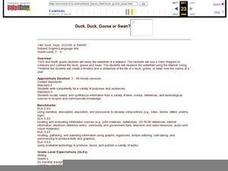


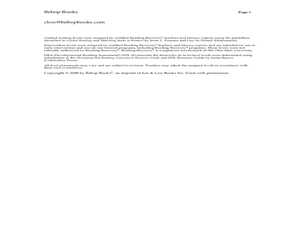



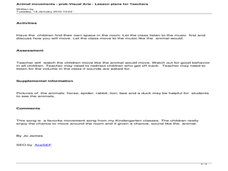




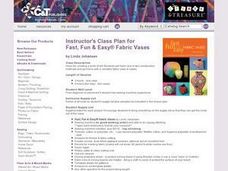
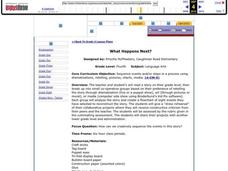


!["For the Birds" [part I] Lesson Plan "For the Birds" [part I] Lesson Plan](http://content.lessonplanet.com/resources/thumbnails/122462/large/cgrmlwnvbnzlcnqymdeymtaxny0ynji5lwd4n2h5by5qcgc.jpg?1414222903)

